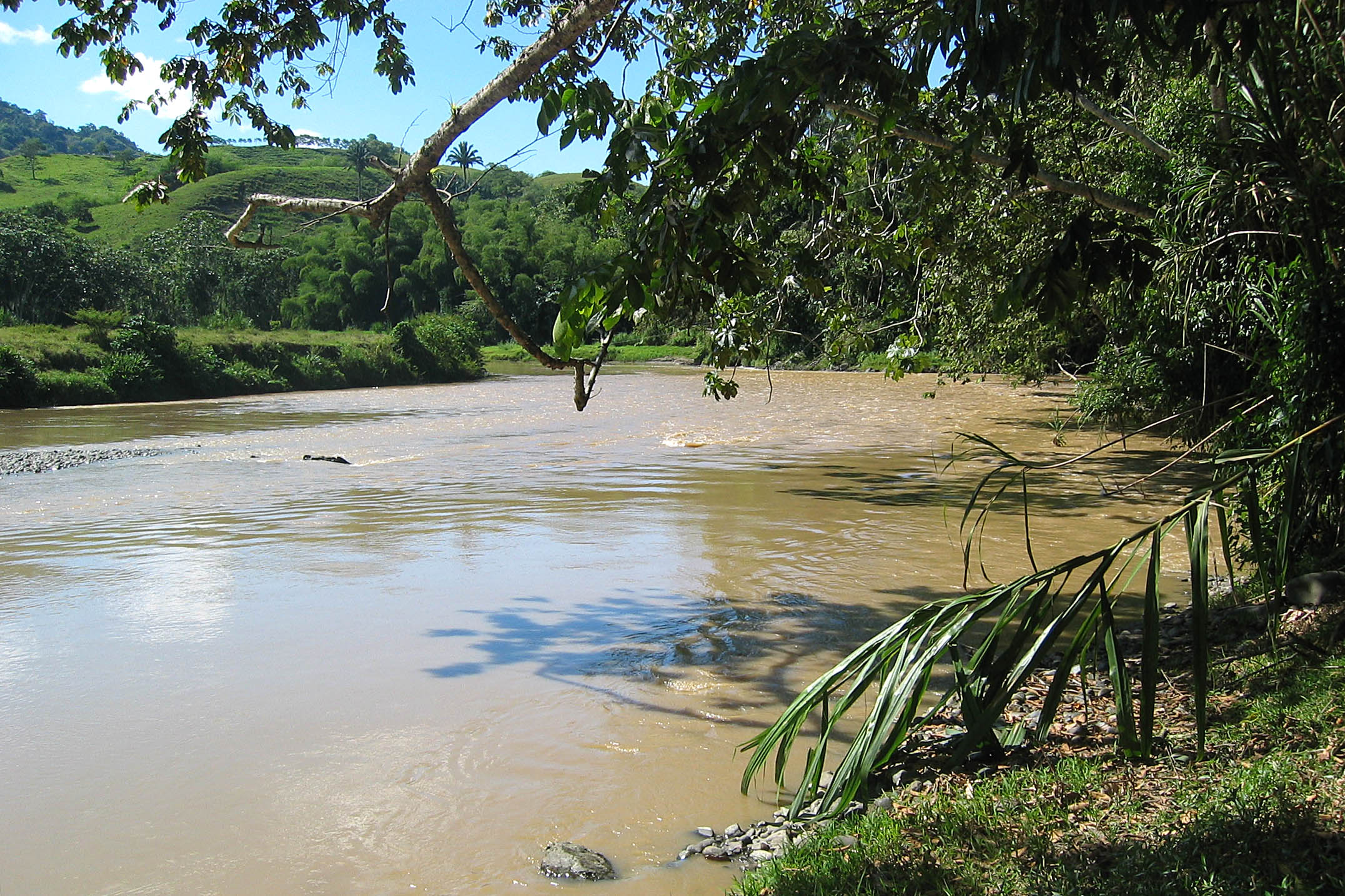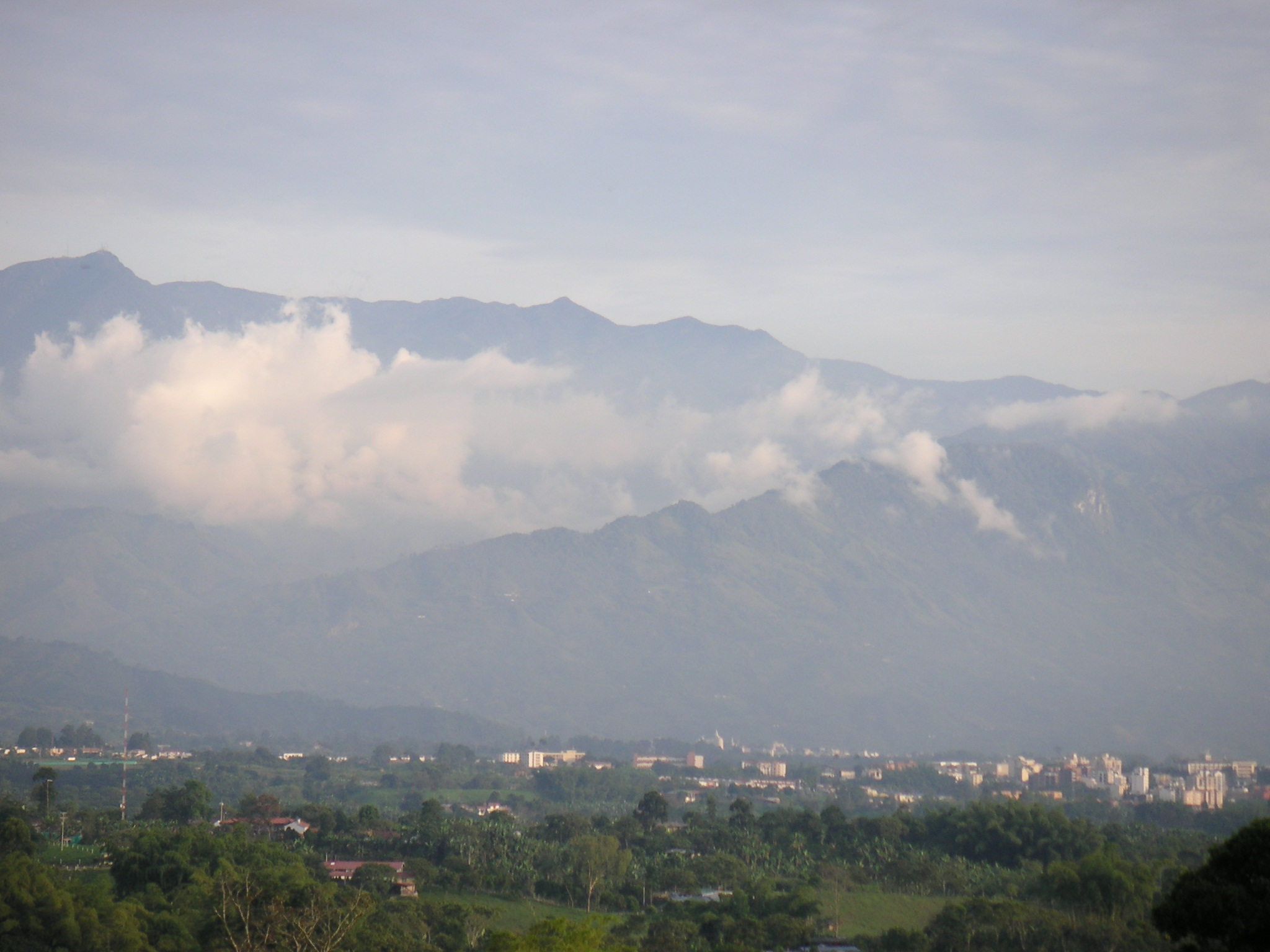|
Buenavista, Quindío
Buenavista is a municipality in the south-central part of the department of Quindío, Colombia. It is known and named for the spectacular view over the department. The township is located south of the departmental capital Armenia. In 2005 it had an estimated population of 5,800, of which 2,100 live in the urban center. It is the smallest municipality by population in Quindío. Geography Buenavista is situated in the western slopes on the central Cordillera and is characterized by its steep terrain. It is bounded to the north and west by Calarcá, to the east by Córdoba with the Verde River forming the limit, and to the south by Pijao The Pijao (also Piajao, Pixao, Pinao) are an indigenous people from Colombia. Ethnography The Pijao or Pijaos formed a loose federation of Amerindians and were living in the present-day department of Tolima, Colombia. In pre-Columbian time .... It has an area of 41 km², the smallest municipality in the department. The main town ... [...More Info...] [...Related Items...] OR: [Wikipedia] [Google] [Baidu] |
Municipalities Of Colombia
The Municipalities of Colombia are decentralized subdivisions of the Republic of Colombia. Municipalities make up most of the departments of Colombia with 1,122 municipalities (''municipios''). Each one of them is led by a mayor (''alcalde'') elected by popular vote and represents the maximum executive government official at a municipality level under the mandate of the governor of their department which is a representative of all municipalities in the department; municipalities are grouped to form departments. The municipalities of Colombia are also grouped in an association called the ''Federación Colombiana de Municipios'' (Colombian Federation of Municipalities), which functions as a union under the private law and under the constitutional right to free association to defend their common interests. Categories Conforming to the law 1551/12 that modified the sixth article of the law 136/94 Article 7 http://www.alcaldiabogota.gov.co/sisjur/normas/Norma1.jsp?i=48267 the mu ... [...More Info...] [...Related Items...] OR: [Wikipedia] [Google] [Baidu] |
Departments Of Colombia
Colombia is a unitary state, unitary republic made up of thirty-two departments (Spanish language, Spanish: ''departamentos'', sing. ''departamento'') and a Capital District (''Capital districts and territories, Distrito Capital''). Each department has a governor (''gobernador'') and an Assembly (''Asamblea Departamental''), elected by popular vote for a four-year period. The governor cannot be re-elected in consecutive periods. Departments are administrative division, country subdivisions and are granted a certain degree of autonomy. Departments are formed by a grouping of municipalities of Colombia, municipalities (''municipios'', sing. ''municipio''). Municipal government is headed by mayor (''alcalde'') and administered by a municipal council (''concejo municipal''), both of which are elected for four-year periods. Some departments have subdivisions above the level of municipalities, commonly known as provinces of Colombia, provinces. Chart of departments Each one of th ... [...More Info...] [...Related Items...] OR: [Wikipedia] [Google] [Baidu] |
Quindío Department
Quindío () is a department of Colombia. It is in the western central region of the country, crossed by the Andes mountains. Its capital is Armenia. It is famous for the quality of the coffee plantations, colorful architecture, benign weather, variety of hotel accommodations and tourist landmarks. This department is located in a strategic area, in the center of the triangle formed by the three main cities of the country: Bogotá, Medellín and Cali. Quindío is the second-smallest Colombian department (0.2% of the national territory) with 12 municipalities. Ethnographically and culturally, it belongs to the Paisa region. History Before the Spanish invasion the entire area was inhabited by the peoples of the Quimbaya civilization until the 10th century B.C. At the time of Spanish conquest the area was inhabited by indigenous people of Carib descent known as the Pijao tribes. The native population was gradually reduced due to slavery, armed confrontations, and massacres du ... [...More Info...] [...Related Items...] OR: [Wikipedia] [Google] [Baidu] |
Colombia
Colombia (, ; ), officially the Republic of Colombia, is a country in South America with insular regions in North America—near Nicaragua's Caribbean coast—as well as in the Pacific Ocean. The Colombian mainland is bordered by the Caribbean Sea to the north, Venezuela to the east and northeast, Brazil to the southeast, Ecuador and Peru to the south and southwest, the Pacific Ocean to the west, and Panama to the northwest. Colombia is divided into 32 departments and the Capital District of Bogotá, the country's largest city. It covers an area of 1,141,748 square kilometers (440,831 sq mi), and has a population of 52 million. Colombia's cultural heritage—including language, religion, cuisine, and art—reflects its history as a Spanish colony, fusing cultural elements brought by immigration from Europe and the Middle East, with those brought by enslaved Africans, as well as with those of the various Amerindian civilizations that predate colonization. Spanish is th ... [...More Info...] [...Related Items...] OR: [Wikipedia] [Google] [Baidu] |
Armenia, Colombia
Armenia () is the capital of Quindio Department. Armenia is a medium-sized city and part of the " coffee axis" along with Pereira and Manizales. It is one of the main centers of the national economy and of the Colombian coffee growing axis. As a result, the historic center of Armenia was named as part of the "Coffee Cultural Landscape" of UNESCO World Heritage Site in 2011. History The city was founded on October 14, 1889, by Jesús María Ocampo, also known as "Tigrero" (translates to "tiger killer") due to his love of hunting jaguars, known locally as tigers. Ocampo came from Anaime, Tolima, looking for shelter in the mountains of Quindío because he was running away from General Gallo. He paid one hundred pesos in gold coins to Antonio Herrera for the land on which to build a fonda, or trade center, not only for himself but also for other colonists who came from Salento, Antioquia, Manizales, and areas surrounding the Quindío River and La Vieja River. Ocampo then proc ... [...More Info...] [...Related Items...] OR: [Wikipedia] [Google] [Baidu] |
Córdoba, Quindío
Córdoba is a municipality in the eastern part of the department of Quindío, Colombia. It is located 24 km southeast of the departmental capital Armenia. Córdoba is bounded to the north by the municipality of Calarcá, to the south by Pijao, to the west by Buenavista, and to the east by the department of Tolima. Córdoba was founded in 1927 by Jesús García and Jesús Buitrago, and became a municipality in 1966 when it split from Calarcá. In 2005 it had an estimated population of 7,800, of which 4,100 live in the main urban zone. By population it is the second smallest municipality in Quindío, after Buenavista. Córdoba is home to the National Bamboo and Guadua Investigation Center (). Open to the public, the center shows the potential uses of guadua ''Guadua'' is a Neotropical genus of thorny, clumping bamboo in the grass family, ranging from moderate to very large species. Physically, ''Guadua angustifolia'' is noted for being the largest Neotropical ba ... [...More Info...] [...Related Items...] OR: [Wikipedia] [Google] [Baidu] |
Pijao, Quindío
Pijao is a municipality in the south-eastern part of the department of Quindío, Colombia. The township is located 31 km south of the departmental capital Armenia. In 2005 Pijao had an estimated population of 10,250, of which 5,700 live in the urban center. Located along the Colombian coffee growing axis, it was made part of the "Coffee Cultural Landscape" UNESCO World Heritage Site in 2011. Geography Pijao is bounded to the north by Buenavista and Córdoba, to the south by Génova, to the west by the Valle del Cauca Department, and to the east by the department of Tolima. It has an area of 243 km². History The first settlers in the Pijao region arrived in the 1890s from Tolima. Many were radical Liberal guerrillas, fleeing reprisals from the governing Conservative regime and the civil disorder that culminated in the Thousand Day War. Among them were Quintiliano Fernández and his wife Griselda Marín. Loaiza (2004) cites their great-grandson, who tells ... [...More Info...] [...Related Items...] OR: [Wikipedia] [Google] [Baidu] |

